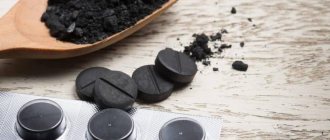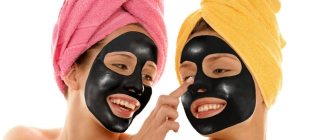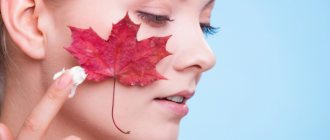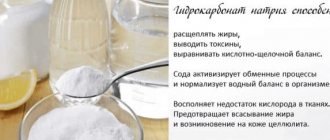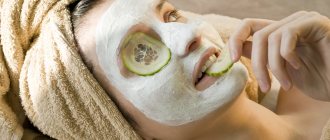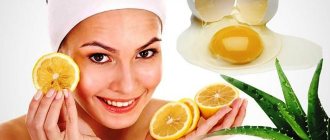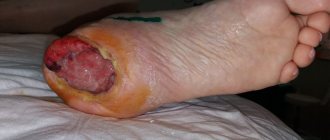According to modern medical statistics, every third person on the planet has problem skin. Having begun in adolescence, skin problems remain with a person for the rest of his life, simply changing and turning into an aesthetic problem.
The so-called blackheads, in medical language called comedones , also cause a lot of grief to their owners. This skin looks unkempt.
Comedones are formed as a result of the accumulation of excess sebum and dead epidermal cells in the pores. The pores become clogged, and their upper part oxidizes upon contact with air and turns black.
To get rid of such blackheads, pharmaceutical ointments, peelings, and cosmetic strips are used. And recently, a gelatin mask for blackheads has become a real favorite for those who want to have flawless skin.
Causes of blackheads
There are many reasons why blackheads appear on the face.
The most common of them:
- Eating fatty, carbohydrate-rich foods and sweets;
- Clothing or cosmetics that block air access to the pores;
- Heavy sweating;
- High indoor humidity or humid climate;
- Stress, premenstrual syndrome;
- Use of certain steroid-based drugs;
- Hormonal changes that are associated with adolescence, menstruation, pregnancy and the use of birth control pills.
Composition of gelatin or some useful information
Gelatin (or hydrolyzed collagen protein, which we discussed in detail in this article) is a food product of animal origin. When purified and dried, it appears as colorless or pale yellow crystals with a neutral odor. For its production, bones, cartilage and tendons of cattle, as well as fish bones are used. Gelatin contains:
- proteins fats carbohydrates;
- amino acids;
- starch;
- ash;
- biologically significant elements (calcium, magnesium, phosphorus, sodium, potassium, iron);
- water.
Vegetable gelatin substitutes - pectin and agar-agar are made from brown and red seaweed, but we are now interested in a natural product of animal origin.
Collagen (fibrillar protein) forms the basis of connective tissue, which accounts for more than 50% of a person’s weight. In addition to its other responsibilities, it is responsible for the strength, firmness and elasticity of the skin.
Hydrolyzed collagen (without carbohydrates and fats) is better absorbed by the body. It provides effective care for problematic as well as mature skin. Alas, after 25-27 years, the body’s production of collagen slows down, so you will have to take the initiative into your own hands.
How will gelatin help against blackheads?
Gelatin is an extract from animal bones, cartilage and skin. It contains 18 amino acids.
Amino acids such as glycine, proline, arginine are active components of various cosmetic cocktails and are used during procedures to rejuvenate and improve the quality of facial skin in beauty salons.
After application to the face, the gelatin mask begins to harden, turning into an elastic film. When this film is removed, the black dots that have managed to stick to the viscous surface of the gelatin are also removed.
What happens to the skin when applying a gelatin mask against blackheads:
- The skin receives hydration and nutrition while the gelatin mask dries on the face;
- Nutrients stimulate collagen growth , which helps skin renewal;
- Glycine accelerates the healing of problem skin;
- Gelatin, due to its natural stickiness, binds to dirt , oil, dead cells and toxins that are found on the surface of the skin. Having absorbed everything unnecessary, gelatin easily and painlessly removes them from the surface of the epidermis;
- and opening of pores on the skin occurs
Preparing the base for masks
There are many different recipes for masks with gelatin. To prepare them at home, you need to make a gelatin base. This is done like this:
- Pour gelatin powder with water (distilled or boiled) at room temperature. For 1 tbsp. gelatin, take 75-85 ml of water (this is approximately 5-6 tbsp). Stir and leave for 10-15 minutes to swell.
- Place the container with the swollen gelatin in a water bath. Stirring constantly, keep on low heat until completely dissolved. Do not bring to a boil!
- After the mass has cooled, you can add the remaining components to it.
- Instead of water, you can use herbal infusions or homemade milk.
Skin preparation and recommendations for applying a gelatin mask
To maximize the effect of the mask, the skin should be prepared in advance. The mask should be applied to a face that is free of impurities and decorative cosmetics.
Preparation stages:
- To cleanse, you need to use a special product: tonic, lotion, milk or foam for washing;
- Soft peeling using a scrub with small particles is welcome;
- You can place a warm, damp towel on your face to open up your pores as much as possible. For the steaming effect, just hold the towel for 5 minutes.
For inflammatory diseases on the face and dry, sensitive skin, it is better to avoid using a hot towel.
Recommendations for application:
- It is better to apply a neutral cream to the eyebrows and eyelashes to protect them from getting the mask on them;
- There is no need to apply the mask to the area around the eyes and directly around the lips;
- You can put cucumber slices or wet chamomile tea bags on your eyelids;
- It is better to apply the mask using a brush along massage lines: from the chin to the earlobes, from the tip of the nose to the top of the ears, from the forehead to the temples;
- The prepared gelatin mass can be applied both to the entire face and to the problem T-zone, where comedones accumulate most frequently;
- It is better not to talk or make facial movements with a mask on your face. It is advisable to lie down and relax.
Contraindications
There is no allergy to pure gelatin, but additional ingredients in the mask can trigger it. You should select recipes without foods that the body cannot tolerate.
It is better to test the new composition first on the wrist or elbow. If after 15-20 minutes no unpleasant sensations appear (itching, redness, tingling), then the mixture can be distributed over the face.
The area under the eyes is too delicate and gelatin masks should not be applied to it. There are many other products available to care for this sensitive area.
It is important to consider your skin type and condition when choosing a formulation. Masks without fatty components are not suitable for those with very dry skin. In case of inflammatory processes and wounds, you should not use them.
Homemade gelatin masks are an excellent way to take care of your facial skin and get rid of blackheads in the problematic T-zone. You don't need to spend a lot of time or money to prepare them. Be sure to try one of the beauty recipes.
Recipes for effective gelatin masks against blackheads
In the recipes below, gelatin acts in combination with other natural ingredients that can enhance its effect, as well as complement it, increasing the positive effect of the mask at home.
Film mask made of gelatin and activated carbon
Activated carbon is a substance with a porous structure obtained from charcoal, coconut and walnut shells and other materials of organic origin.
It has a powerful absorption effect that even absorbs poison. Charcoal also works on the skin, absorbing toxins and heavy metals.
The mask is used for oily and normal skin types.
Ingredients for cooking:
- Gelatin – 1 teaspoon;
- Coal (crushed) – 1 teaspoon;
- Distilled water – 2 tbsp. spoons.
Stages of preparation, application and removal of the mask:
- Place gelatin and charcoal in one bowl;
- Add water and mix well;
- Microwave for 15 seconds;
- Allow to cool to a comfortable temperature and apply to skin;
- Keep for 20-25 minutes until dry;
- Remove the mask without sudden movements, carefully starting from the chin;
- Rinse off any remaining residue with warm water and complete the procedure with cool water;
- Apply coconut oil or light moisturizer.
After using the mask, the pores narrow, due to the removal of rough and dead particles, the skin breathes better and acquires a pleasant color. The mask also has a smoothing, cleansing and drying effect.
Use is contraindicated for rosacea, dry skin and more than once a week.
Mask made of gelatin and milk
Milk has the property of softening rough skin, unclogging pores and controlling oily skin. Contains unsaturated fatty acids and vitamin E.
Suitable for dry, irritated and normal skin.
Ingredients for cooking:
- Gelatin – 1 tbsp. spoon;
- Milk – 3 tbsp. spoons.
Stages of preparation, application and removal of the mask:
- Mix ingredients in a bowl;
- Microwave for 15 seconds;
- Apply to face;
- Wait 20-30 minutes;
- Remove the formed gelatin film, starting from the chin;
- Rinse off the residue first with lukewarm, then with cold water;
- Apply moisturizer.
Milk complements the beneficial properties of gelatin and removes dead cells using lactic acid. Moisturizes dry skin. The mask has a moisturizing, exfoliating, whitening and soothing effect.
Contraindicated for use if you are allergic to milk or more than once a week.
Gelatin mask with fruits
Fruit juice or pulp is usually used for this mask. Fruits are rich in antioxidants and vitamins. In this mask, gelatin is also “helped” in the fight against blackheads by fruit acids.
For normal and dry skin, you can take peach, raspberry, apple, and pear juice. For oily skin, lemon, orange, tomato or grape juice are suitable.
Ingredients for cooking:
- Gelatin – 1 tbsp. spoon;
- Fruit juice or fruit puree – ½ cup.
Stages of preparation, application and removal of the mask:
- Mix ingredients;
- Heat slowly with constant stirring until the gelatin is completely dissolved;
- Cool to a comfortable temperature and apply to face;
- Keep for 20 minutes;
- If some fruit acids prevent the mask from “grabbing” and it does not come off like a film, then you must first remove the mask from your face using a cloth, then wash off the residue first with warm, then with cold water;
- Apply a natural cream, such as chamomile, to the skin.
Fruit juice or fruit pulp, thanks to its vitamins, nourishes the skin, while at the same time moisturizing and exfoliating it. Well, gelatin absorbs everything unnecessary and removes it. The mask also gives the skin a “radiant” look.
Use is contraindicated in case of allergies to certain fruits, dermatitis, seborrhea on the face and more than once a week.
Gelatin and protein mask
Egg white is a popular ingredient in face masks. It is rich in protein and albumin, which have skin toning properties.
Suitable for normal, oily and combination (more oily) skin types.
Ingredients for use:
- Gelatin – 1 tbsp. spoon;
- Egg white – 1 pc.
- Milk – 2 tbsp. spoon.
Stages of preparation, application and removal of the mask:
- Combine milk and gelatin;
- We wait a few minutes until the gelatin swells;
- Heat the swollen gelatin in a microwave oven or in a water bath;
- Cool slightly, then add egg white;
- Stir until the ingredients are completely mixed;
- Apply to cleansed facial skin;
- Keep for 20-25 minutes;
- Remove the resulting thick film with careful movements, starting from the lower part of the face;
- We wash off with warm water, or still mineral water, and finish the procedure with cold water;
- Lubricate your face with any moisturizer.
Protein tightens pores, tightens the skin, smoothing out wrinkles and giving the skin elasticity. By combining with gelatin, it increases its stickiness, which only increases the effectiveness of the fight against comedones.
The mask has a toning, rejuvenating, cleansing, tightening and drying effect.
Contraindicated for use in case of egg allergy, hypersensitivity, dry skin and more than once a week.
Mask made of gelatin and flour
Flour contains selenium, which has antioxidant properties, as well as vitamin E and zinc.
You can use corn flour, chickpea flour, buckwheat flour, oat flour, etc., and instead of green tea, take another, no less healthy liquid.
Suitable for normal and oily skin types.
Ingredients for cooking:
- Gelatin – 1 tbsp. spoon;
- Green tea – 1/2 cup;
- Flour – 1 tbsp. spoon.
Stages of preparation, application and removal of the mask:
- Pour green tea over gelatin;
- Leave to swell for 5 minutes;
- Heat until the gelatin is completely dissolved;
- Add flour and stir;
- Apply to face;
- Leave on face for 15-20 minutes;
- Remove the mask layer with careful manipulation, starting from the chin;
- Apply moisturizer.
The mask tightens the oval of the face, and the sticky structure removes blackheads. It also has a tonic, cleansing and nourishing effect.
Use is contraindicated for very dry skin and more than once a week.
Mask made of gelatin and clay
Clay is a unique substance known for its ability to remove toxins, heavy metals and saturate cells with oxygen. It is rich in beneficial minerals such as magnesium and calcium. Clay is a recognized medicinal product.
Ingredients for cooking:
- Gelatin – 1 tbsp. spoon;
- Clay – 1 tbsp. spoon;
- Milk – 2 tbsp. spoons.
Stages of preparation, application and removal of the mask:
- Mix all ingredients in a bowl;
- Microwave for 10 seconds;
- Cool until the mask is pleasantly warm;
- Apply to problem areas or the entire face;
- The duration of the mask is 20-25 minutes;
- Carefully remove the film, starting from the bottom;
- Rinse off with warm water, using your hands or a cleansing sponge.
- Lubricate your face with moisturizer.
Clay absorbs excess sebum, relieves irritation and peeling, and heals. Thanks to its whitening properties, it fights well against pigment spots. Combining with gelatin, it has a powerful and complex effect on problem skin.
Each type of clay has its own characteristic properties and is suitable for a specific skin type:
- Green clay is an organic material consisting of minerals and decomposed algae. Tones and improves blood circulation. Suitable for oily and combination skin types;
- Yellow clay - consists of small mineral particles and iron oxides. A powerful cleanser. Suitable for oily skin;
- Pink clay (a mixture of red and white) is the most delicate of all types, suitable for all skin types due to its light texture;
- Gray clay has rejuvenating properties, refreshes, tones. Suitable for dry skin;
- Black clay is the densest in structure. Has anti-inflammatory and cleansing effects.
Green clay
Yellow clay
Pink clay
Gray clay
Black clay
Use more than once a week is contraindicated.
Gelatin mask with essential oils
The range of beneficial properties of essential oils is very wide. Skin benefits range from anti-aging to calming effects. Oil extraction occurs from different parts of plants: seeds, roots, resin, petals, peel.
Not only eucalyptus oil, but also lavender oil, lemon, tea tree, sage, tangerine, cedar and juniper oil helps fight acne.
Suitable for all skin types.
Ingredients for cooking:
- Gelatin – 1 tbsp. spoon;
- Apple cider vinegar – 1 tbsp. spoon;
- Water – 1 tbsp. spoon;
- Eucalyptus essential oil – 2 drops.
Stages of preparation, application and removal of the mask:
- Mix all components in one container;
- Microwave for 10 seconds;
- Apply a warm mask to clean and relaxed skin;
- Wait 20 minutes;
- Remove the gelatin film by prying it up from below with your fingers;
- Wash off any residue with water at room temperature;
- Lubricate your face with moisturizer.
The astringent property of eucalyptus essential oil helps neutralize sebaceous secretions on the skin and get rid of blackheads. The mask also has a smoothing, toning, whitening and regenerating effect.
It is not advisable to use it during the day, as oils exposed to ultraviolet radiation can cause redness of the skin more than once a week.
Gelatin and honey mask
Honey is an incredible ingredient. A rich source of flavonoids and antioxidants, it has long been a main component in the list of cosmetic products.
Suitable for all skin types.
Ingredients for cooking:
- Gelatin – 1 tbsp. spoon;
- Milk – 2 tbsp. spoons;
- Honey – 1 tbsp. spoon.
Stages of preparation, application and removal of the mask:
- Add milk to gelatin;
- Microwave for 15 seconds;
- Let cool slightly and add honey;
- Apply to skin along massage lines with a brush or fingers;
- Keep for 20-30 minutes;
- Remove the mask starting from the chin;
- Rinse off the residue first with warm, then cool water;
- Apply moisturizer.
Honey acts as a natural antibiotic and draws out dirt from the pores, cleansing the skin. Antiseptic properties destroy microbes that clog skin pores. In addition, honey improves skin tone and improves complexion.
Use is contraindicated if you are allergic to honey or more than once a week.
Gelatin and spirulina mask
Spirulina is a blue-green algae that is a freshwater plant. The presence of a huge amount of useful substances in its composition has made spirulina a popular dietary supplement.
Microelements, omega fats and other substances rarely found in nature allow us to talk about it as a superfood.
It would be unfair not to take advantage of the benefits of spirulina to combat skin imperfections, particularly blackheads.
Ingredients for cooking:
- Gelatin – 1 tbsp. spoon;
- Warm boiled water – 3 tbsp. spoons;
- Spirulina - 4 tablets;
- Fruit juice – 1 teaspoon.
Stages of preparation, application and removal of the mask:
- Add 1 tbsp to gelatin. a spoonful of water and leave to swell;
- Heat in a water bath or in the microwave until the gelatin dissolves (10-15 seconds);
- Pour the remaining water over the spirulina tablets, add fruit juice and stir.
- Combine this mass with gelatin and apply to the face;
- The duration of the mask is 25 minutes;
- Remove the mask by moving your hands from bottom to top;
- Rinse off with warm water;
- Lubricate your face with moisturizer or sprinkle with cold water.
Spirulina, together with gelatin, moisturizes the skin, has a drainage effect, improves blood circulation, has a lifting effect, not to mention the vitamins and minerals that nourish the skin.
Apply once a week.
Mask with gelatin and activated carbon
This mask is very popular among women of all ages. Gelatin serves to form a film, activated carbon acts as an absorbent, collecting all dirt, grease, dust and other contaminants, cleansing pores and drying the skin. Milk has a moisturizing effect, it can be replaced with water, this will not worsen the cleansing effect of the mask, but it will act more aggressively on the skin. Instead of milk or water, you can use a decoction of herbs, such as calendula, chamomile or St. John's wort.
Mask composition:
- 1 tablet of activated carbon
- 5 tbsp. spoons of gelatin powder
- 2 tbsp. spoons of milk or water (preferably boiled).
To apply the mask you will need a brush or cotton pad; you won’t be able to apply this mask with your hands because it is quite liquid.
Stages of applying the mask:
- Crush the coal tablet into powder, for example, with a tablespoon, or even with your fingers.
- Add gelatin and then pour in milk or water. Let the mixture swell.
- Dissolve the gelatin by heating the mixture in a double boiler, or heat it in the microwave for a few seconds.
- Wait for the mask to cool to a comfortable temperature and immediately apply it to your face.
- Let it dry and carefully remove the resulting film from the chin to the forehead.
- Wash and moisturize your skin with your cream.
The final stage of the procedure
Depending on the components, the mask can behave differently, for example, it can be removed easily and painlessly, or it can dry out and cause pain when trying to remove it from the face.
In this case, the mask must be removed carefully, gradually washing it off with warm water, and under no circumstances should you tear off or injure the skin.
Procedures after using a mask with gelatin:
- The face should be washed with cool, clean water;
- Rub your face with an ice cube;
- Allow the skin to dry naturally;
- Coconut oil can be applied to the skin to soothe it and create a protective antibacterial layer;
- Oil can be replaced with a light moisturizer or emulsion.
Reviews of women about the black mask from around the world
Karina, 24 years old, Gurzuf: “...I couldn’t get rid of blackheads. I tried a lot of expensive remedies, even tried to remove it with ascorbic acid, but there was no effect. I saw a mask with gelatin and a well-known adsorbent that could be prepared at home. I read the reviews and decided, and I don’t regret it. Now my skin has become beautiful and clean, and I have forgotten about torture with ascorbic acid forever...”
Victoria, 54 years old, Silistra: “...My skin at 54 didn’t look quite fresh anymore. I took the risk of making a face mask with pink clay, the recipe for which I saw on YouTube. The result was noticeable after just 1 month of regular procedures. I want to try making a film with the addition of kefir or yogurt...”
Maria, 18 years old, Lugozh: “...I hope that my reviews will help solve the problem of many young girls. I couldn’t get rid of blackheads and pimples, and I tried drug treatment, adjusted my diet, and bought various pharmacy “trash,” but the problem remained. I accidentally saw a recipe for a mask made from gelatin, an absorbent, and it also contained milk. I tried it, and what I saw simply amazed me: on the back of the film removed from the face, I saw a lot of different garbage. It’s scary to think that I carried all this on myself...”
Agata, 32 years old, Athens: “...I read reviews on an irrecommendation about a mask with gelatin for acne and blackheads. I didn’t believe that just a few tablets of a regular absorbent would help solve these facial problems. But the reviews were too convincing, and I couldn’t resist. In addition, I had milk and an activated carbon tablet on hand, and I went to the nearest supermarket for gelatin. I really liked how this film works - after 20 minutes all the dirt from my face was left on it...”
Elizaveta, 27 years old, Kiev: “...I work as a confectioner and am very familiar with gelatin. I never thought that it could be used against acne and blackheads. And when I saw the advertisement, I thought that this was another common myth. A spoonful of milk, a little honey, a charcoal tablet and gelatin - this is the secret to a beautiful face! For the first time, I achieved narrowing of pores so quickly and got smooth, beautiful skin...”
Anastasia, 42 years old, Moscow: “I heard a lot about the black mask, read reviews, an enthusiastic recommendation from Olga Seymour, and therefore I decided that it would help get rid of acne. I liked the recipe where you need 1 spoon of any clay, water and an absorbent. Now I do the procedures regularly and look 10 years younger. And the price list of a beauty salon doesn’t scare me anymore...”
Klara, 23 years old, Budapest: “...Why do people leave their reviews about certain products? Most likely so that others can benefit from their experience. Thanks to them, I discovered the black mask. Just 1 large spoon of this black substance once a week gave me a clean and beautiful face..."
Angelika, 33 years old, Dresden: “...Skin care, like dental treatment, cannot be put on the back burner. I always tried to provide her with the necessary care. I have tried many products in different price categories. According to the advice of many doctors, I always keep activated charcoal in my medicine cabinet, so when I read the recipe for an acne film, I made it immediately. It gave not only smoothness, but also cleaned the pores. I even made it for my husband!..”
Tips for use
When using a gelatin-based mask, you should adhere to the following tips:
- Gelatin for masks should be regular, tasteless and odorless . Do not use the contents of the packages to prepare multi-colored jelly. Such an ingredient may stain the skin of the face;
- If gelatin is sheet, then you must remember that 1 plate corresponds to two grams of granulated gelatin , 6 plates - 1 tbsp. spoon;
- Any gelatin-based cleansing masks should be used no more than once a week , since excessive efforts lead to even more intense work of the sebaceous glands;
- The gelatin mask for blackheads should be kept on the face until it dries . This takes at least 20-25 minutes;
- If there are signs of discomfort, you should immediately wash off the mask before the time required for its action expires;
- You should always test the mask on a small area of skin to make sure it does not have a negative reaction to the components;
- A cleansing mask with gelatin against blackheads gives an exfoliating effect, the reaction to which may be redness of the skin . Therefore, it is better to carry out such procedures at night, so that by the morning the skin can rest and recover.
Can you get rid of acne by taking activated charcoal? 68
It is no secret that all enterosorbents are intended for internal use, because only when they are in the stomach can they help remove toxic substances from the gastrointestinal tract. This information formed the basis of the theory that taking charcoal tablets internally can cleanse the intestines of toxins that cause acne.
This is a fundamentally erroneous opinion for several reasons:
- so many toxins do not accumulate in the intestines to cause a rash;
- all toxins present in the intestines are eliminated naturally;
- Despite the fact that gastrointestinal pathologies are one of the common causes of acne, internal use of charcoal tablets will not prevent or cure acne.
Frequent, prolonged and unreasonable use of activated carbon can lead to serious health problems. The fact is that enterosorbent blocks the absorption of nutrients by the walls of the gastrointestinal tract. This gradually leads to a deficiency of vitamins and microelements, which negatively affects the entire body. Abuse of charcoal tablets can lead to hypovitaminosis, hypothermia, decreased absorption of hormones, carbohydrates and proteins, as well as other irreparable consequences.
Reviews
Reviews on the use of a gelatin mask for blackheads:
